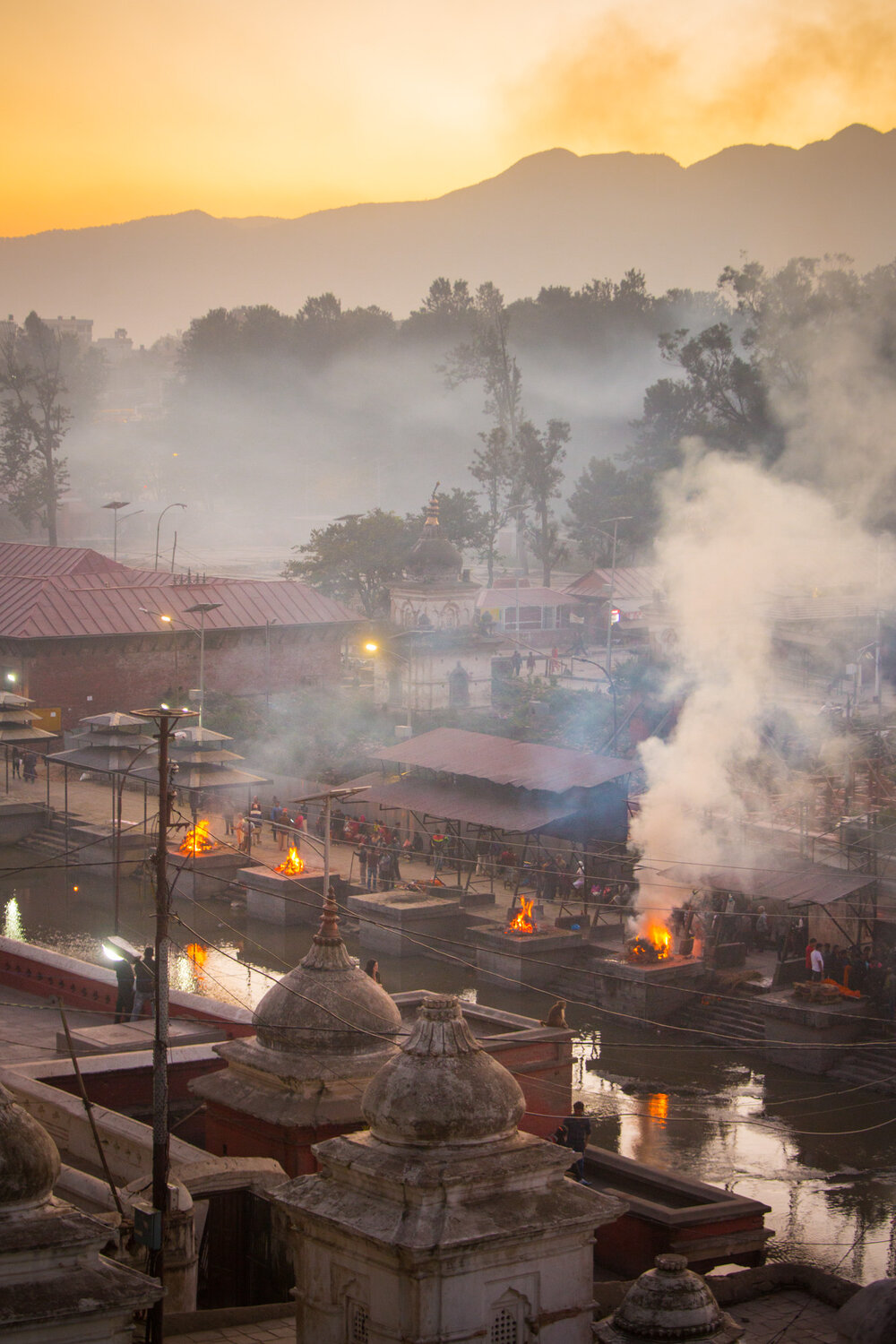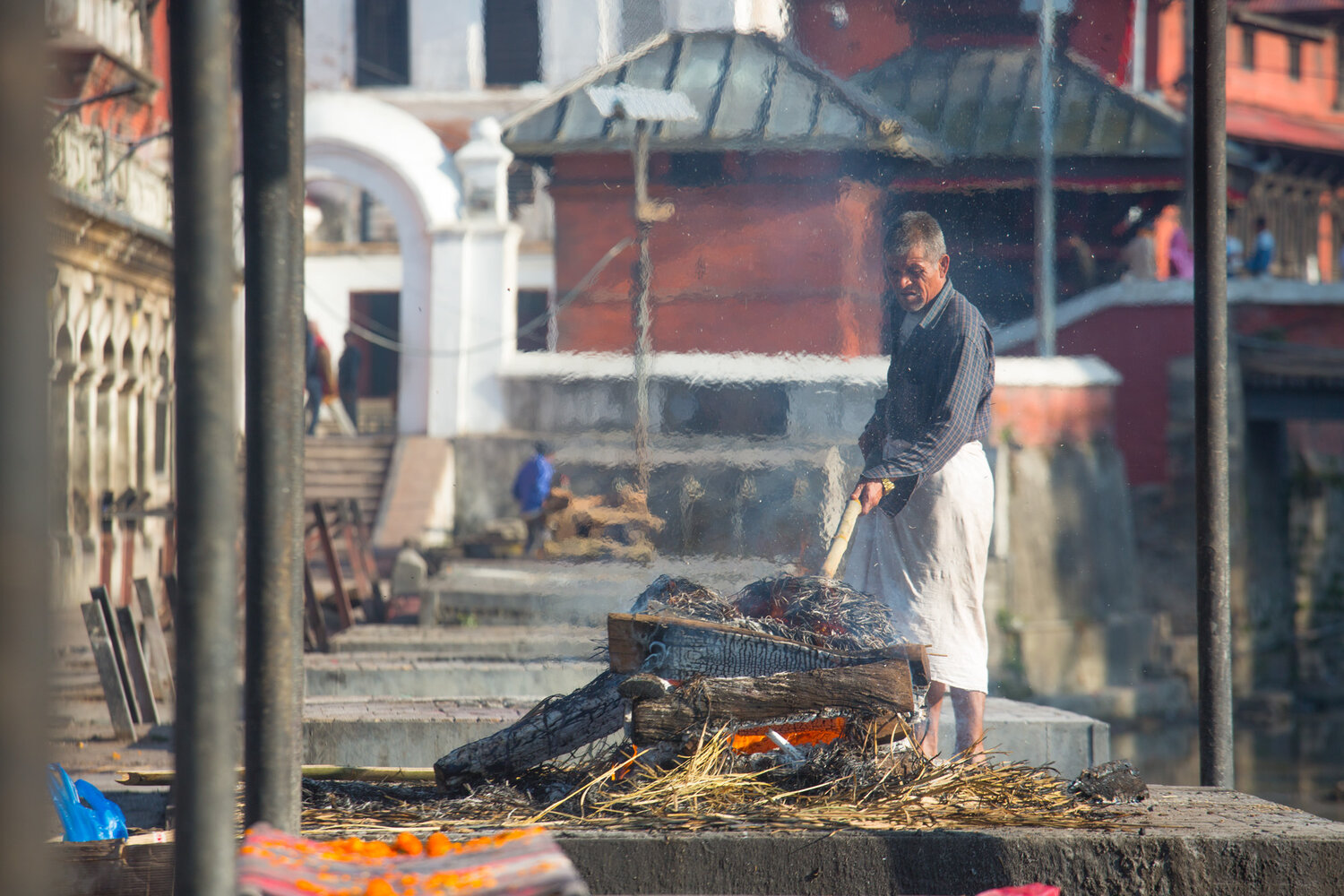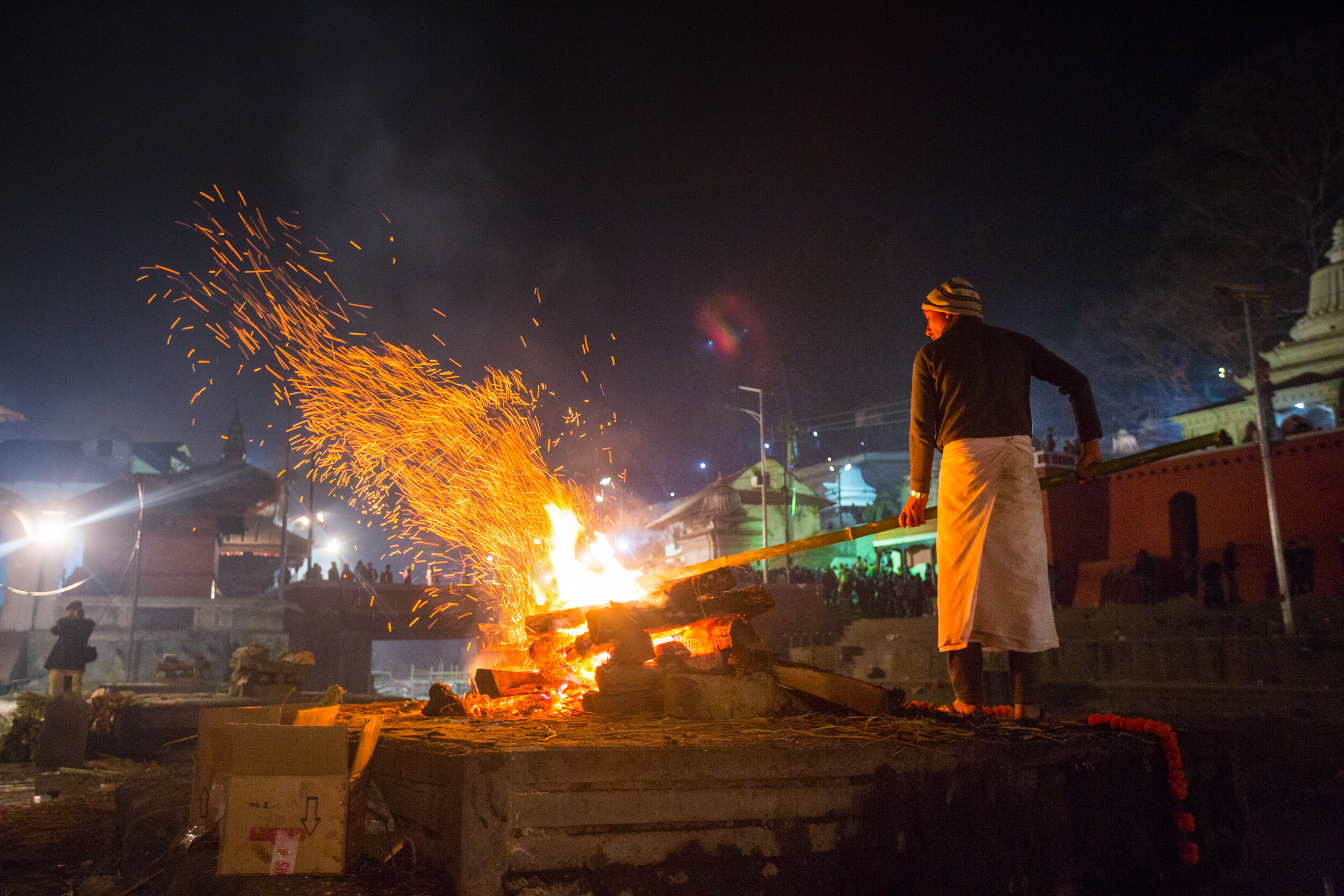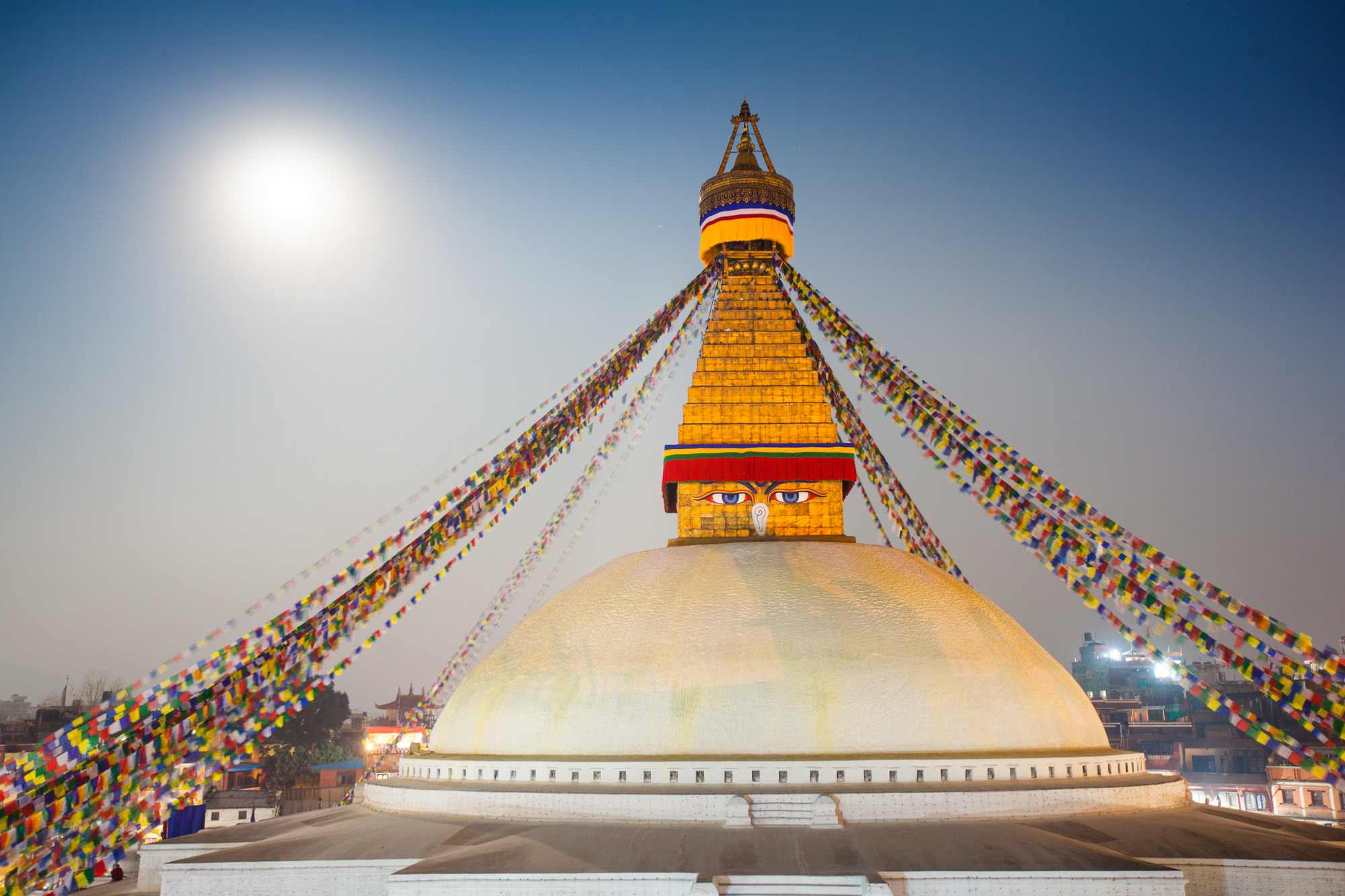Lhundrup Tsek
Taming the Dakinis
“From Vajrasattva you received the Mahayoga Tantras
and perfected the great resplendence of the Sambhogakaya.
From there you continued your journey to Nepal,
arriving at the charnel ground Lhundrup Tsek.
Renowned Senge Dradok, Lion’s Roar: Homage to you!
”





AT A GLANCE
Here at Lhundrup Tsek, Guru Rinpoché practiced among fearsome dakinis and manifested as the great Guru Sengé Dradok, the Lion’s Roar.
THE STORY
Lhundrup Tsek, the Spontaneous Mound charnel ground, belongs to a network of wild and esoteric places visited by Guru Padmasambhava along his journey of spiritual accomplishment. Together, they are known as the Eight Great Charnel Grounds. The Mahaguru faced the challenges of each of these sepulchral lands, transforming their raw and vibrant energies into the nectar of his realization.
Entering the charnel ground of Lhundrek Tsek is as easy today as arriving in the Kathmandu Valley, for they are one and the same. To actually see it, however, requires a profound change in observation. The Great Jarung Kashor Stupa at Boudha remains the heart of Lhundrek Tsek, where wild spirits used to roam and where Guru Rinpoché tamed dakinis through his tantric virtuosity. It is said that to enter the true space of the charnel ground, we must have purified our perception.
Still, we are fortunate to be able to walk along the road from this sacred ground and stupa to nearby Pashupatinath, where the whiff of the charnel ground still remains, even for the ordinary pilgrim.
Words from the masters
The significance of this site is captured in the following works:
A Beautiful and Wondrous Udumbara Garland: A Supplication and Summary of the Epic of Padma - Jamyang Khyentsé Wangpo
Le’u Dünma - Tulku Zangpo Drakpa
How to get there
While the charnel ground encompasses the entire Kathamandu Valley, its spiritual center is at the Boudha Stupa. The actual location where bodies of the deceased were cremated is now unfortunately covered by houses. The only remaining indication is the small cemented water source in a narrow alley near the stupa. - Map Location
Although this area beside the Boudha Stupa no longer serves as a charnel ground, the major site of Hindu pilgrimage, Pashupatinath, does still fall within its precincts, and is still very much an active charnel ground. At Pashupatinath, bodies are ceremonially cremated every day on the banks of the Bagmati River. For more details on food, accommodation and transportation, please see the previous chapter on Boudha.
While at the Main site
Pashupatinath - Map Location
The nearby sacred Hindu site, Pashupatinath, or Pashupati for short, is still ripe with all the trappings of a charnel ground. It takes roughly 20 minutes to walk here from the Boudha Stupa. It is easy to find by taking the street opposite Boudha main gate. Since Pashupati is widely regarded as the most sacred Hindu site in the Kathmandu Valley, one can also simply ask locals for directions. Please note that a one-time fee of 1,000 NPR is charged for entry to Pashupati.
Below we highlight the sites within the compound of Pashupati that Buddhists in particular have recognized as sacred.
Chemchok Heruka Temple - Map Location
Within the Pashupathi compound, the beautiful Chemchok Heruka Temple—Vishvarup in Nepali—enshrines a large copper statue of Chemchok or Mahottara Heruka in union. Chemchok Heruka is the main deity in the mandala of the fifty-eight wrathful deities, as the wrathful aspect of Samantabhadra. Chemchok Heruka is also the central deity in the mandala of Tsokchen Düpa and the Kagyé. It is said that the statue was taken as a victory trophy from a Tibetan monastery, after a battle in which Gorka fighters had defeated the Tibetans. Hindus believe it to be a statue of Shiva Shakti. The 2015 earthquake severely damaged the temple, and the statue can no longer be visited, due to structural hazards.
Avalokiteshvara Statue - Map Location
This black painted statue of a two-armed standing Avalokiteshvara, about one meter high, carved into a stone, is located within the Pashupathi compound, not far from the Guru Goraknath temple. The statue is said to be eight hundred years old. It is located among other similar statues and easily missed.
Mahakala Statue - Map Location
A special Mahakala statue is located inside the perimeter of the Pashupati main temple. Please note that foreigners are not allowed to enter the temple precincts.
Naropa and Tilopa Caves - Map Location
These are two small caves dedicated to the mahasiddhas Naropa and Tilopa, located close to the ghats at Pashupati, on the banks of the Bagmati river.
Goraknath Temple - Map Location
Guru Goraknath is a famous saint, cherished by Hindus and Buddhists alike. According to Buddhist legend he was an emanation of Guru Rinpoché and one of the 84 Mahasiddhas. A small shrine dedicated to him is found by ascending the staircase behind the Guhyeshwori Temple.
Guhyeshwori Temple - Map Location
Nestled in the vicinity of Pashupatinath, on the northern bank of the Bagmati River, you’ll find Guhyeshwari—a sacred place reserved exclusively for Hindus. It holds immense significance as a Shakti Pitha, a revered site where Sati's yoni is believed to have descended to Earth. In 1654, King Pratapamalla undertook the construction of a temple at this location to enshrine this sacred site. Within the temple’s hallowed walls, a remarkable feature takes center stage—an intricately formed support resembling a naturally-arisen yoni. At the heart of this concealed chamber, saline water perpetually flows forth, gradually accumulating to create a serene pool. In recent times, a petite eight-petalled lotus lid, crafted from copper and adorned with gold, has been installed as a covering, crowned by the presence of a sacred vase. Devotees come to drink and collect this sacred water, believing in its blessings.
Beyond the main site
Sankhu Vajrayogini - Map Location
Sankhu, a Newar town in the northeast corner of the Kathmandu Valley, gained prominence due to its role in the Tibet trade and its connection to the renowned shrine of the goddess Vajrayogini on a nearby hill. Its origins date back to the 7th century A.D. when a trade route was established from Kathmandu through Sankhu to Tibet, contributing to the town’s founding and historical prosperity. The shrine on the forested Manichunda hill north of Sankhu, where the goddess Vajrayogini resides, predates the town itself. Originally a monastery known as Gum Vihara, this site played a crucial role in spreading Buddhism from Nepal to Tibet. The sacred lake Manichunda is situated near the top of Manichunda Mountain, discharges its water into two different directions: to the east, in the Manishaila and to the west in the Manilohini.
Sankhu has a long history of pilgrimage and visits by siddhas for extended retreats and ganachakra feast offerings. There are several caves surrounding the site. It is said that some of the 84 Mahasiddhas of India have meditated here.
The main temple enshrines a representation of Ugra Tara, or Ekajati, said to have been brought from Bengal in the 14th century. The female deity is depicted wielding a sword—khadga—and is aptly called Khadga Yogini. The upper temple has an identical image of Ugra Tara, forged in bell metal. In both the upper and lower temples, the main deity is flanked by Baghini and Singhini, the tiger and lion-headed yoginis.
In the upper temple is a bronze Buddha and a Lokeshvara, both in standing posture. Below this upper shrine room is a small chamber containing a self-arisen Swayambhu stupa in stone. Behind the temple is a courtyard with a basin containing the “Water of the Kalpa,” which never dries up. In the building immediately to the left of the stairs is an eternal fire or “Fire of the Kalpa”. Above the Sankhu Temple complex, there is also a blessed and sacred lake - Map Location.

